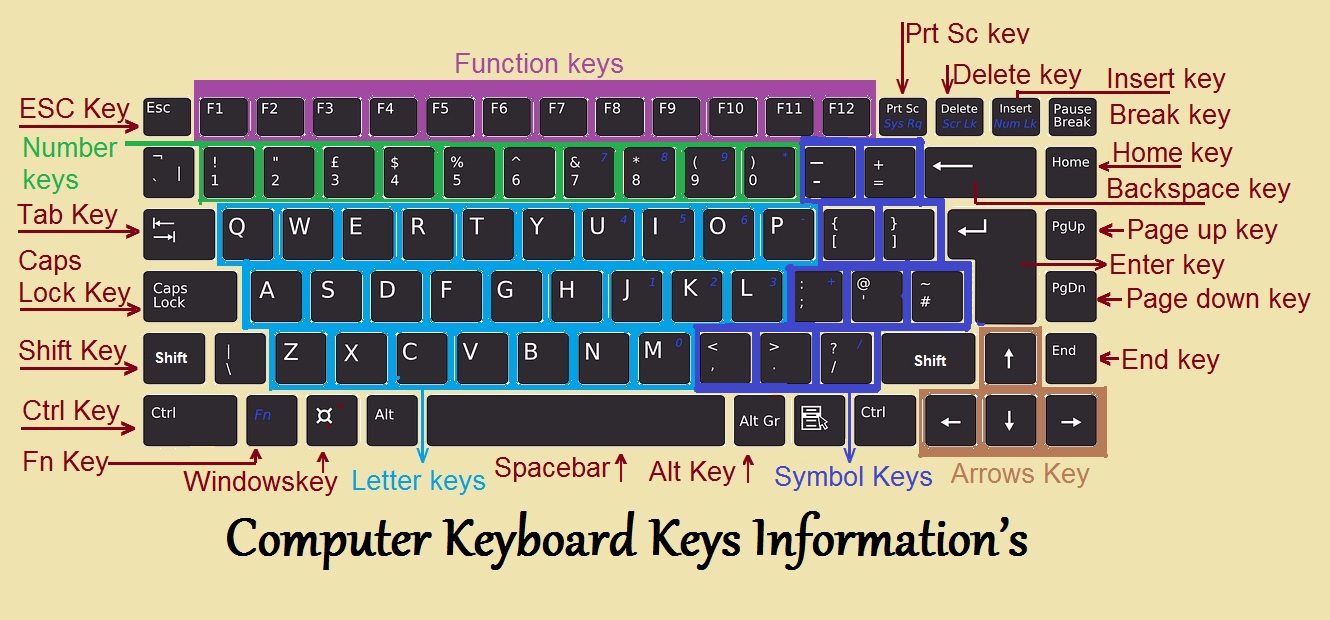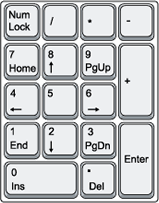SESSION 5 :
USING OF A COMPUTER
To turn on a computer, press the power button on the system unit.
When you turn on the computer, lights on the keyboard may blink
briefly and you may also hear a beep. This is an indication that the
power-on self test (POST) has started.
POST :-
The computer performs a sequence of quick tests to check
whether the motherboard, memory, hard drive,and other
components are working.
Key Board:-
Keyboard is a text input device. these are some
important keys are use for basic operations:-
SOME COMPUTER KEYBOARD KEYS INFORMATION’S
Windows key is a four pane key that helps you open any program and applications
ESC Key is used to interrupt or cancel the current process
F1 through F12 Keys are the function keys that has various uses
Tab Key helps to begin a line of text
Caps Lock Key enables or disables the letter in uppercase
Shift Key helps a user to type a single uppercase letter
Ctrl Key is used in keyboard shortcut key
Fn Key is used for performing special functions like brightness, contrast, switching
Spacebar key is used for creating empty space to separate words
Arrows Key with up, down, left and right buttons
Backspace key is similar to delete key for removing texts in a word
Delete key is used to remove text, file or other objects from system
Enter key is used to send the cursor to next line
Insert key toggles how text is inserted
Break key enables the user to break a computer from pause or other halted state
Prt Sc key helps you to take screenshot on your monitor
Home key returns to beginning of line, document, page or screen
Page up key helps to move up one page which is currently viewed
Page down key helps you move down the currently viewed page
End key moves the cursor to end of line, document or screen
Numlock key enables and disables the numeric keypad

Types of keys in keyboard Category wise:-
 2. Number/ Numeric Keys
2. Number/ Numeric Keys


- Alphabetic/ Alphanumeric/ typewriter keys
 2. Number/ Numeric Keys
2. Number/ Numeric Keys
3. Function Keys

4. Special Purpose Keys
Sleep, Power, Volume, Start, Shortcut, Esc, Tab, Insert, Home, End, Delete etc.
5.Modifier Keys/Combination Keys
CTRL (Control Key), ALT (Alter Key), Shift Key.
6. Cursor Keys/ Navigation Keys/ Arrow Keys

7. Toggle Keys:-
Caps Lock/ Num Lock/ Scroll Lock.
Mouse :- A computer mouse is a handheld hardware input device that controls a cursor in a GUI and can move and select text, icons, files, and folders.
SESSION 6:
COMPUTER OPERATING SYSTEMS
Operating System :-
An operating system performs four primary functions. It manages and controls the hardware connected to a computer.It provides a user interface that allows you to interact with the hardware, the operating system itself, and other programs.
Desktop -
A desktop is a computer display area of windows that contains the various
objects one might find in the computer. "After Booting First Show Graphical Screen is called Desktop. There are four type of System Icons on Desktop
(i) My Computer or Computer – it contain all the storage areas of your computer (Hard Disk, Floppy Disk, CD/DVD etc.)
(ii) Recycle Bin – it contains all the deleted content of your computer.
(iii) My Network Places or Network – it contains the information of interconnected computers.
(iv) My Documents or Documents – it contains a common area to store various types of files on the computer.
- Folder:- A folder, also called a directory, is a special type of file on your computer's file system which contains other files and folders.Folders help you keep your files organized and separate.
How to make a folder :-
- Navigate to the Windows Desktop.
- Right-click with your mouse on any blank portion of the Desktop.
- In the menu that appears (like that shown in the picture to the right), click New and then Folder.
- A new folder will appear. Type the name of the folder you want to use and then press Enter.
- Windows Explorer:-
Alternatively referred to as Windows Explorer or Explorer, File Explorer is a file browser found in every version of Microsoft Windows since Windows 95. It is used to navigate and manage the drives, folders, and files on your computer.
HOW TO OPEN A PROGRAM:-
1. Click Start Button ==> Click on Search Option ==> Type Program name in Search box and press enter or click on program in list.
2. Press Window Key + R (Run Dialog Box) and write program name in run box then press enter.
3. Using Program Shortcut on Desktop and task bar.
4. Click On Start Button ==> Click on All Programs == > find program and open it.
Shortcut for open Start Menu:-
1. Windows Key
2. CTRL + ESC Key

No comments:
Post a Comment